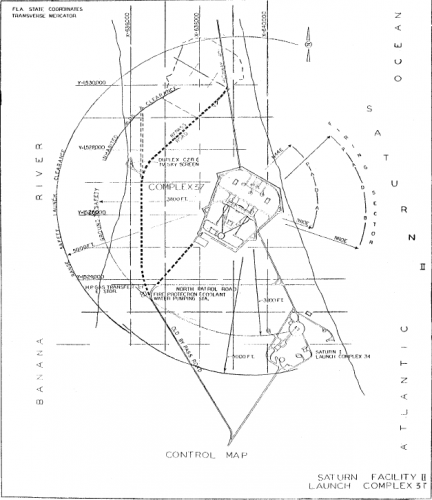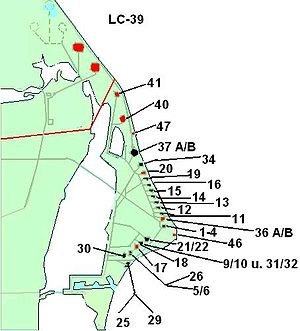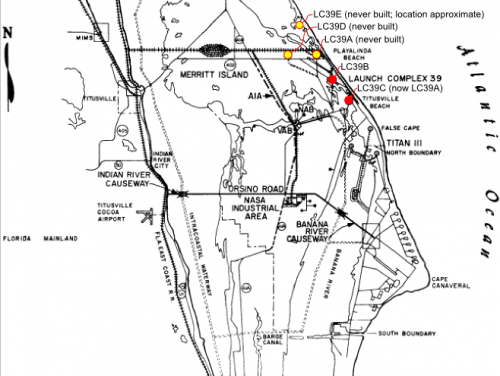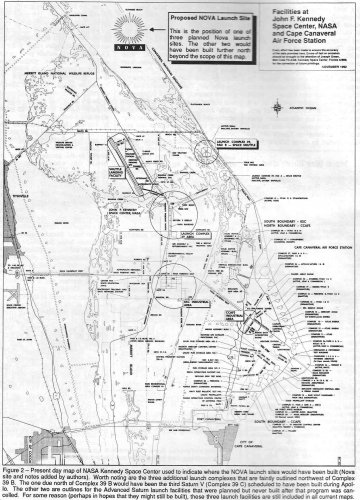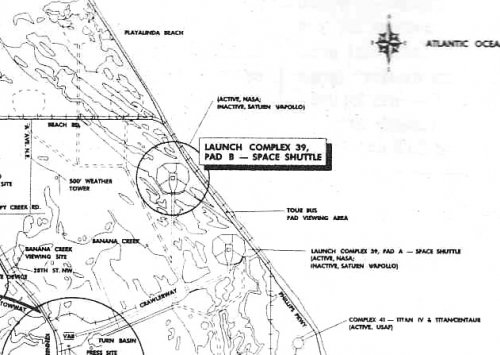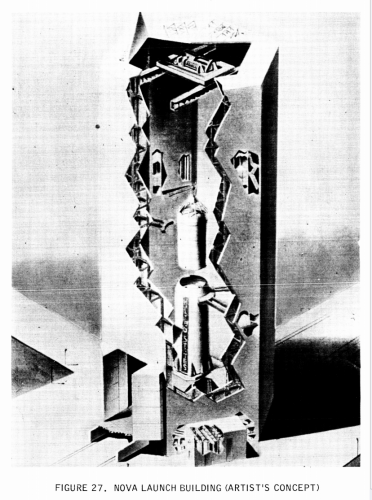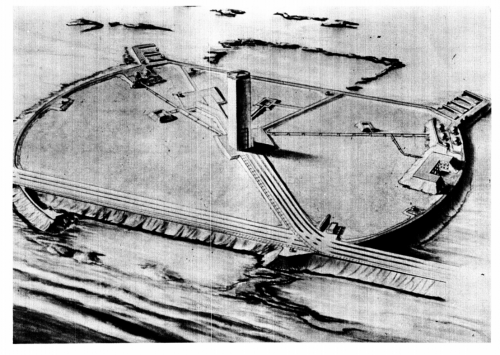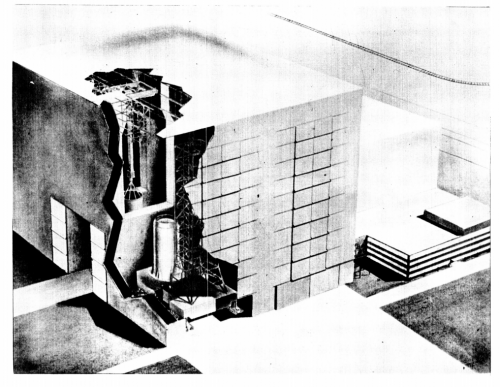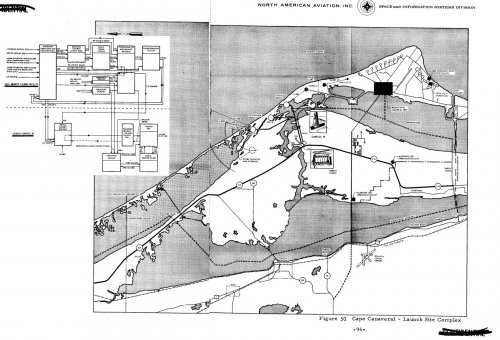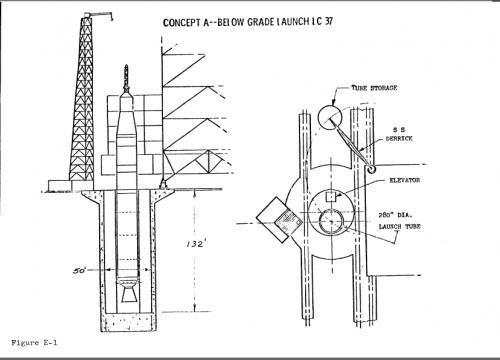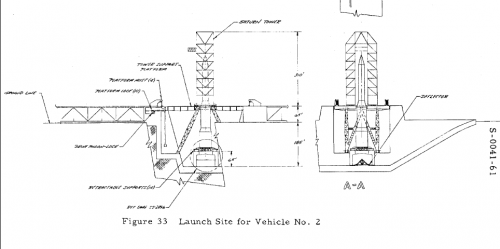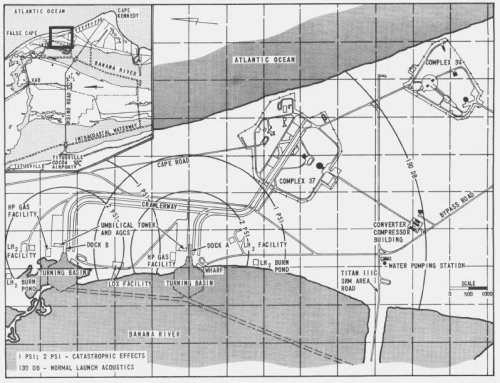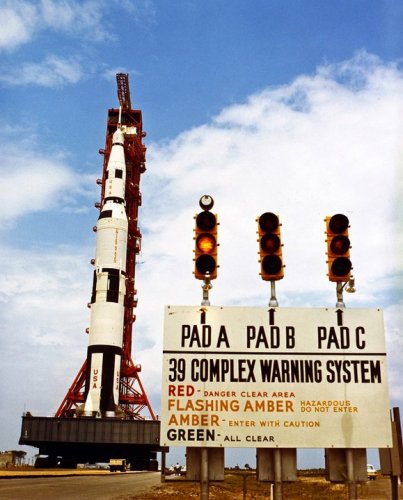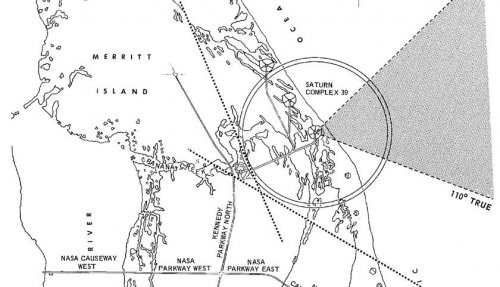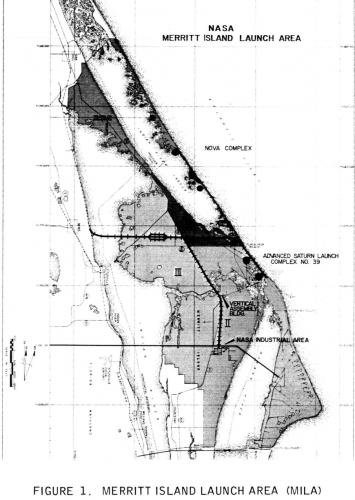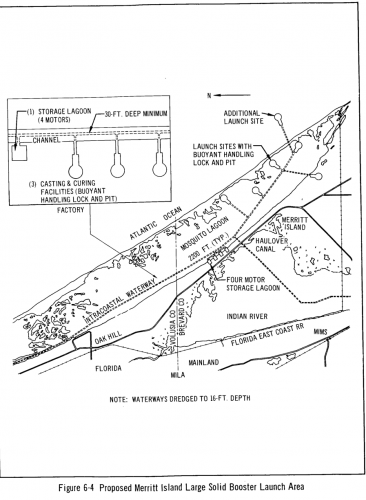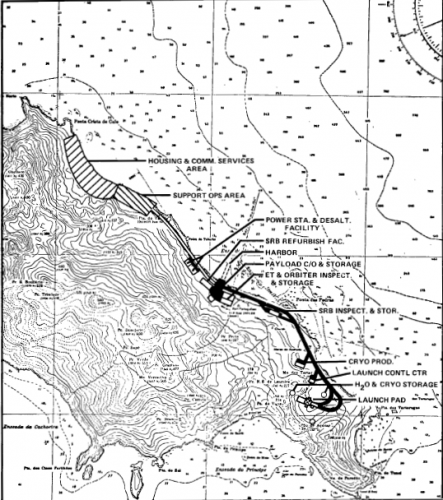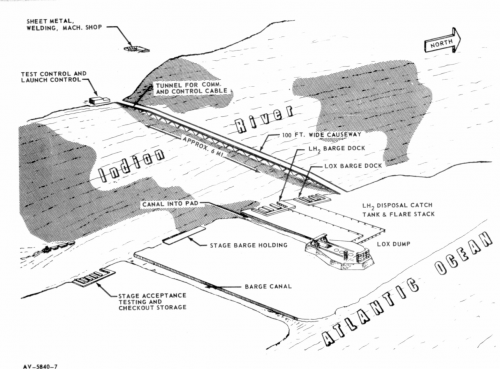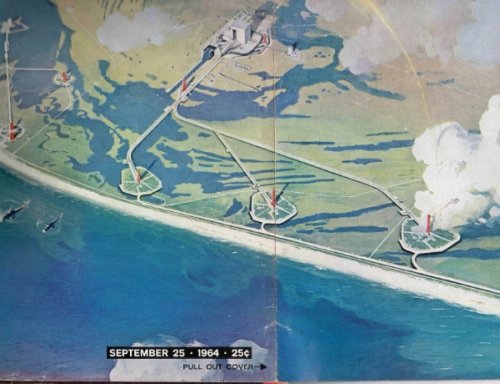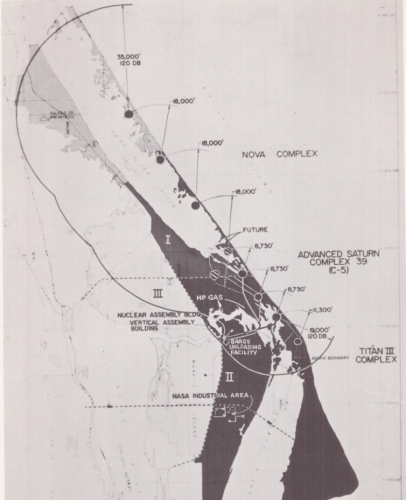Yellow Palace
ACCESS: Top Secret
- Joined
- 5 May 2007
- Messages
- 1,021
- Reaction score
- 1,639
According to Moonport, before the decision to go to the moon, and the consequent rapid evolution from Saturn C-2 through to Saturn C-5, consideration was given to building up to three Saturn dual-pad launch complexes additional to LC-37 at Cape Canaveral. One of these would have been on existing land north of LC-37, and I have a map (attached) which appears to indicate that this would have been roughly half-way between that complex and LC-40. However, the other two would apparently have been constructed by hydraulic fill in the Banana River.
Unfortunately, I can't seem to find the documents referenced online, although this isn't particularly surprising, being rather obscure and if they still exist at all, probably in a half-forgotten folder somewhere. Equally, there's not immediately obvious site for such pads: just about everywhere gives a good chance of a catastrophic failure of a launcher showering most of the Cape with shrapnel. Has anyone seen anything to indicate what sites were being considered for these?
Unfortunately, I can't seem to find the documents referenced online, although this isn't particularly surprising, being rather obscure and if they still exist at all, probably in a half-forgotten folder somewhere. Equally, there's not immediately obvious site for such pads: just about everywhere gives a good chance of a catastrophic failure of a launcher showering most of the Cape with shrapnel. Has anyone seen anything to indicate what sites were being considered for these?

